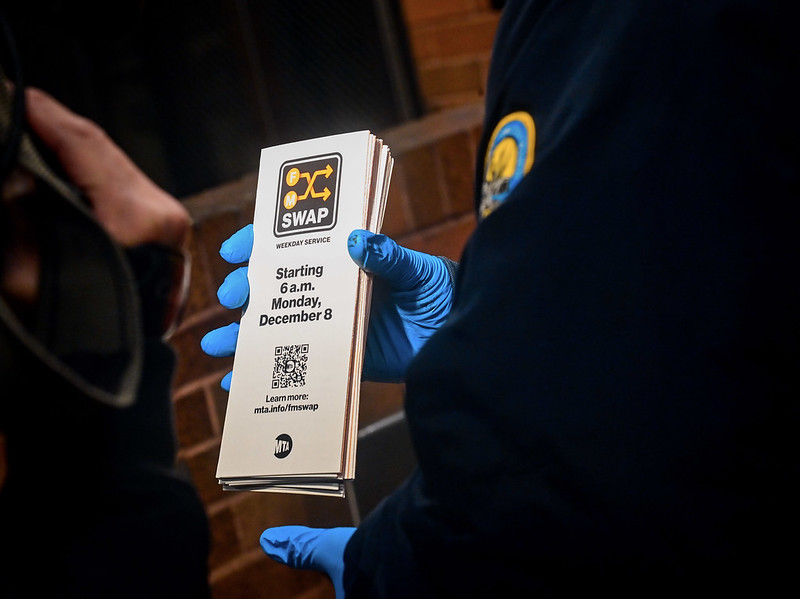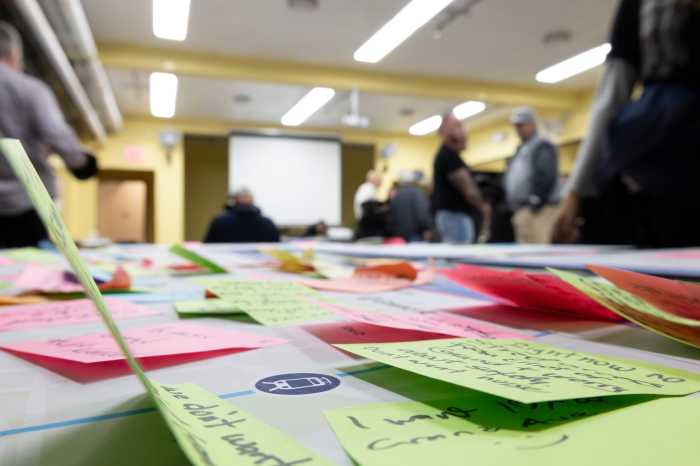By Bill Parry
Thousands of Queens cyclists ride over the Queensboro Bridge every day on their way to work or school, but they lack a safe, protected bike lane on Crescent Street in Astoria and Long Island City to get to the bridge. Transportation Alternatives’ Queens Committee has launched a campaign to change that.
The group is urging the city’s Department of Transportation to install a bike lane along Crescent Street from the Triboro to the Queensboro bridges.
“We’ve only just begun to petition the neighborhood asking for signatures of support, and we’ve already gotten an amazing response,” TransAlt Queens Organizer Juan Restrepo said. “The response is coming from Astoria residents of all walks of life — mothers who want safer streets for their kids, professionals frustrated with an MTA system that is failing them and who need new options, people who are excited about Citi Bike coming, but afraid to ride it with the current configuration.”
Members of the Queens Committee conducted an initial “street scan” of the roadway Sunday, observing and analyzing street infrastructure and patterns, including design, width, parking, driver speeds and behavior, and current existing conditions for pedestrians and cyclists. Queens Committee Chairman Macartney Morris, a Crescent Street resident, said the group found ideal conditions for a protected bike lane, where vehicles are separated from cyclists with a concrete barrier.
“Astoria is hungry for safer cycling conditions,” Morris said. “By summer’s end, 59 Citi Bike stations will be installed in Astoria — seven of them located on or adjacent to Crescent Street. A protected bike lane between the bridges is a necessity for those new riders, as well as existing ones. And as we observed on our street scan, Crescent Street definitely has space for it. For most of its length, Crescent is overbuilt and drivers respond to the over-wide street by speeding, often down the middle of the lane. A protected bike lane would be a much more effective use of that space and would have the effect of narrowing down the road to slow cars down.”
The DOT looks forward to hearing from the advocates, residents and stakeholders and will take their suggestions under consideration, according to a spokesman.
During the street scan, the members also observed ongoing water main construction by the city’s Department of Design and Construction, which has narrowed several parts of Crescent Street to one lane while work is being done.
“DDC’s construction work is already calming the roadway on Crescent Street, and DOT should readily accept this as evidence that the road can be easily narrowed to accommodate safe cycling infrastructure,” Morris said.
As part of its campaign, the Queens Committee will continue its community outreach throughout the fall, specifically with residents, businesses, community organizations and schools along the street. It will conduct additional street scans at different times of the day.
“We look forward to conducting further observations, particularly in morning and evening rush hours,” Restrepo said. “While the few blocks before the Queensboro Bridge will present some greater engineering difficulties, a protected bike lane can work and would be a net-benefit in terms of safety and giving our neighbors more transit options. If we can’t trust our trains to run properly, bikes present the opportunity for residents to take back control of their commute.”
Reach reporter Bill Parry by e-mail at bparr





































